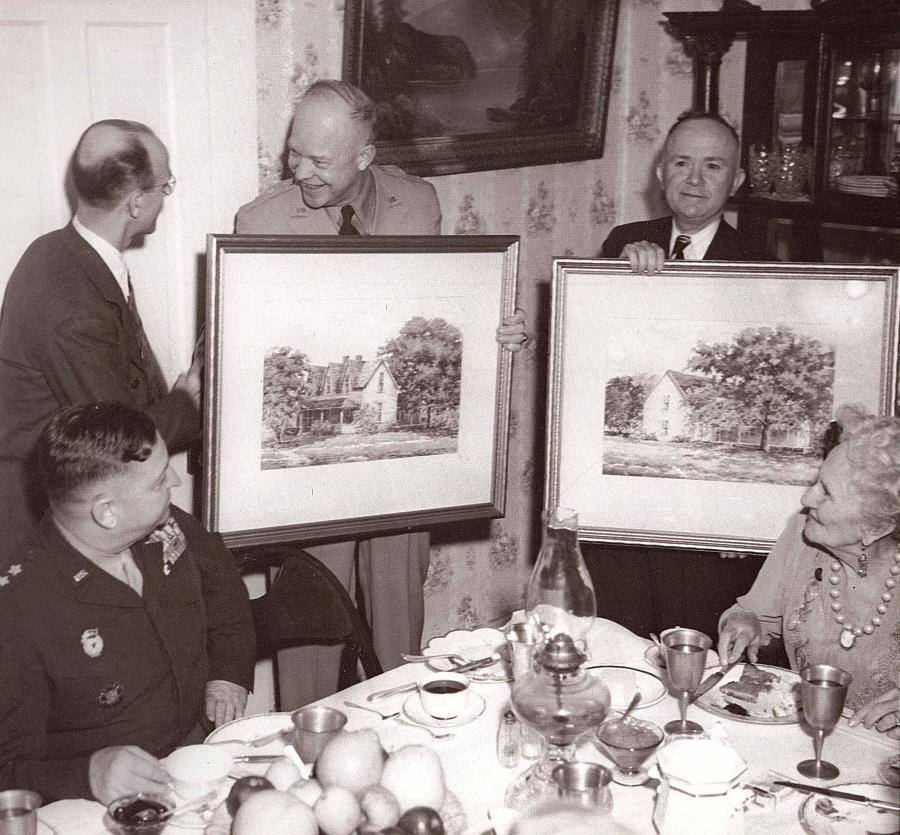Dwight David Eisenhower, the 34th President of the United States, was born in Denison, Texas on October 14, 1890, in a small two-story frame house. Denison was then a booming railroad town of 11,000 people. Eisenhower’s father came to work on the Missouri, Kansas, and Texas (KATY) railroad. His wife gave birth to Dwight in their home located in the working-class neighborhood on the town’s east side, right by the railroad tracks.
Denison residents recalled his birth when Gen. Eisenhower gained national attention during World War II. Moved by patriotism, residents of the community purchased the house he was born in and opened it as a museum in 1946. Gen. Eisenhower made the first of three visits to his birthplace that year. The Eisenhower Birthplace Foundation restored the house and gave it to the State of Texas in 1958.
Today, the house is mostly all that is left of the once-active and diverse neighborhood that surrounded it. The Foundation initially moved the other houses away to create a park, and the KATY’s successor removed the tracks in 1990. With these changes to what was historically a modest, working-class neighborhood, some visitors assume the Eisenhowers were wealthy land owners or farmers, while others mistake the visitors center and other buildings on the property for the Eisenhower home.
To present the story in its historically accurate context, and to make the birthplace home more accessible to all, the Texas Historical Commission is planning several improvements. The site entrance will move to the east through Shepherd Street. Upon arriving, visitors will see the Birthplace house on their left and a new and inviting plaza in front, at the intersection of Shepherd and Lamar streets. The plaza will feature the relocated Eisenhower statue, as well as exhibits highlighting key historical events from his life.
New accessible walkways will connect the parking lot and visitors center to the plaza and the birthplace house. In the open area around the house, visitors will pass the “lost neighborhood footprints”—elevated outlines of the modest homes that once stood there. The roads around the birthplace will be paved with a dirt-colored surface, indicating the once-unpaved streets that ran through this working-class community.
New exhibits throughout the site, including a rebuilt section of the railroad track complete with a historic flatcar, will offer visitors a clearer context of what life was like when the Eisenhower family lived and worked in Denison. With fundraising in progress, visitors can expect to see these changes over the next few years.
